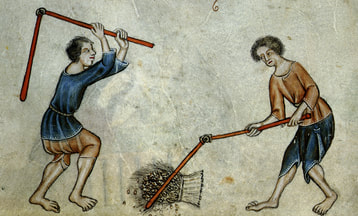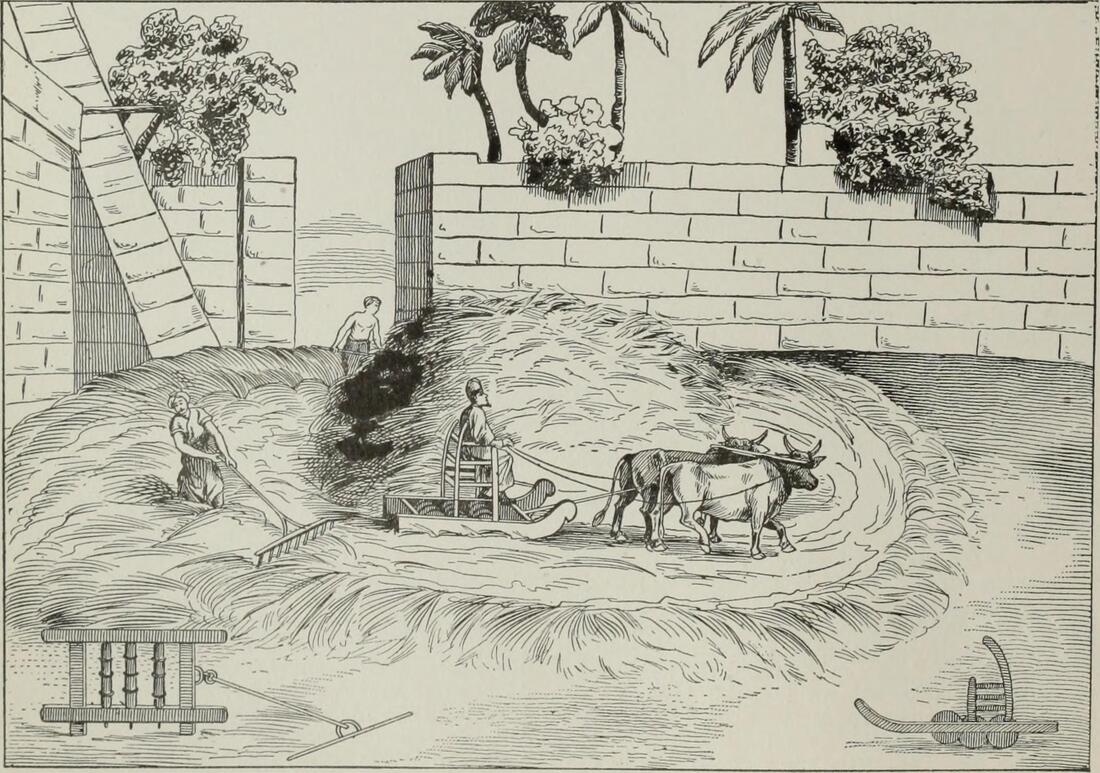 This post details how we threshed grain last summer (2018) and looks forward to how we might try it in the future. Last summer we harvested wild rye from the side of the road. A couple notes on harvesting: Wait for the grain seeds to be hard (not squishy or susceptible to dents) before harvesting. This could be early/mid-July or around there. Scythes are good; billhooks are good; anything that cuts the stalks for collection. Ideally you should let the stalks dry out as well; apparently that’s the original reason for packing grain in sheaves and leaving them in the field. Presumably it also helps avoid ergot (definitely a thing to watch out for). The next step, of course, is threshing: knocking the grain seeds (food) free from the plant stalks (not food). Historically this has been done in a variety of ways including trampling out the grain on the floor by human or animal power, culminating in today’s large combine harvesters (‘combine’ because they reap, thresh, and winnow all at once). We’re interested in something that is good and basic. It needs to be relatively simple, relatively efficient, and good for relatively small batches. Here is one small machine, here is another with more detailed build instructions. The drill-and-chain thresher looks very efficient and we’re looking forward to trying that out. This machine threshes and winnows at the same time, but there are no build instructions. Putting the seed heads in a pillowcase and beating them is an interesting idea that looks like it could work. You can even just rub the stalk heads through your hands (likely more effective for tiny amaranth seeds than larger wheat/rye seeds, also more time consuming). Virtually any kind of percussion/rubbing will likely work.
0 Comments
Leave a Reply. |

 RSS Feed
RSS Feed
